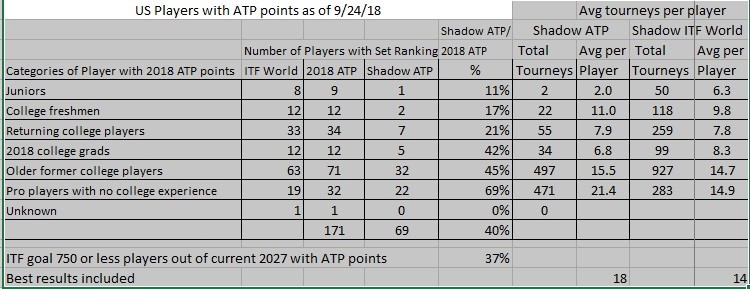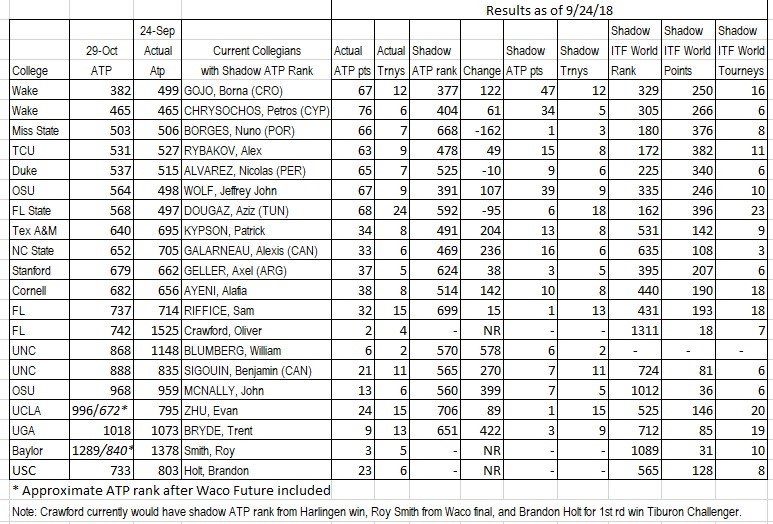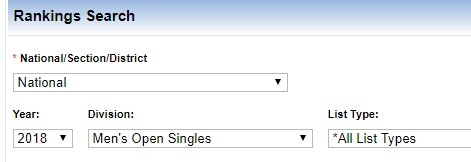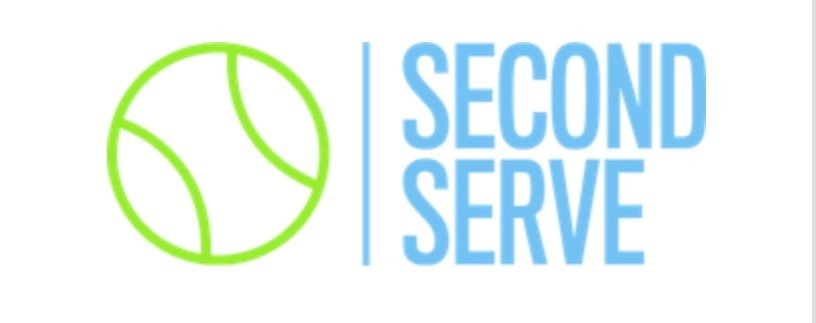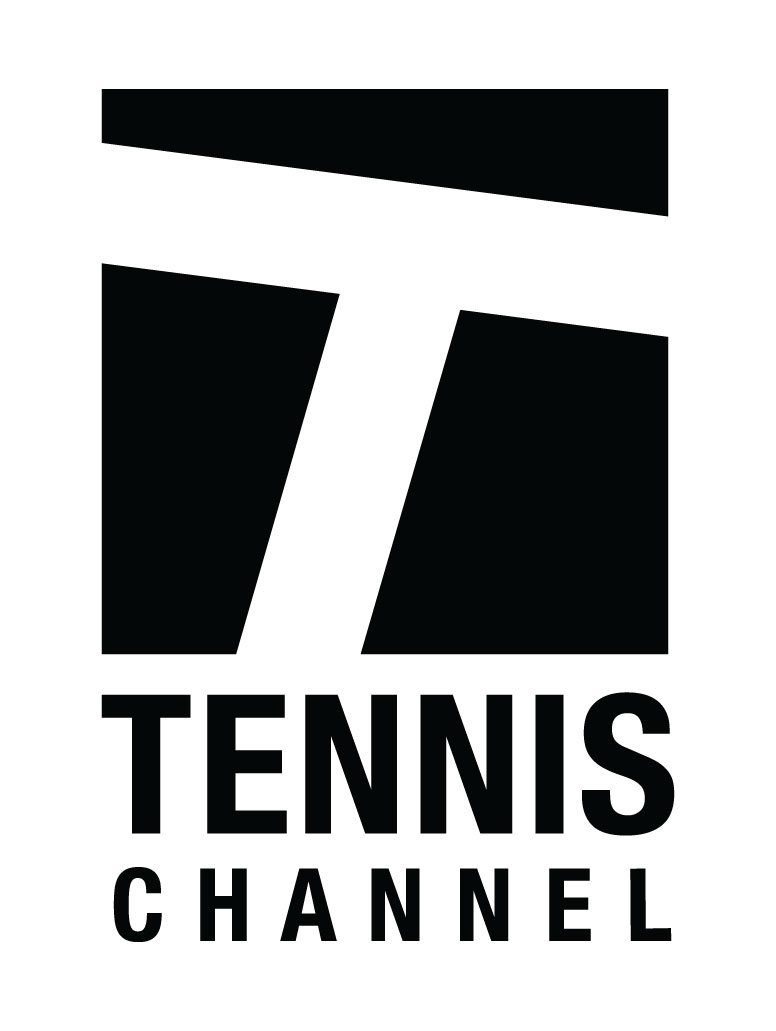A Look at the 2019 Transition Tour & Its Impact
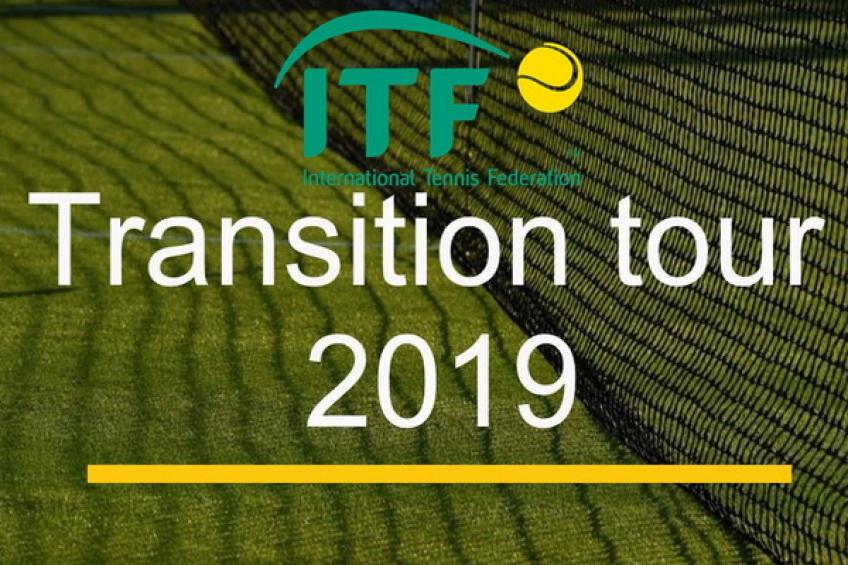
I received the following article from a long-time member of the ParentingAces Community. She put a lot of effort into dissecting and explaining the new ITF Transition Tour and its potential impact on college and junior players. Please note: this is one person’s interpretation of the impact of the changes based on a lot of analysis of one report at a specific point in time (September 24, 2018).
We need to ask two questions here: 1) Will collegians still have the opportunity to play Futures; and 2) If not, what new opportunities will USTA/ITA create to develop US college players? Also will there be a fair process for host universities to give out wild cards? Most wild cards are deserved, but when bench players of top universities are gettting WCs over other talented state or regional college players, maybe we need to start asking questions.
Please take your time reading this article then feel free to post any comments or questions below. The author will be monitoring the Comments and will address them as appropriate. You can read or listen to other articles/podcasts on the Transition Tour at Are We Killing the Dream? Transitioning to the ITF Transition Tour and State of the Game: Putting a Big Ten into Tennis to Make it a Healthier Sport. I also invite anyone from the ITF, USTA, and/or ITA to chime in here. It’s crucial that we all have a clear understanding of the impact of this new structure.
A Comprehensive First Look at the 2019 Transition Tour Changes and its Potential Impact on College and Junior Tennis
Data from 9/24/18 Shadow ATP and ITF World Report
Since July, the ITF has sent players reports showing their shadow ITF world points, i.e. the transition tour points they would have earned for the rolling 12-month period under the new 2019 system. In late September, the ITF published a report showing shadow ATP rankings: what players’ current ATP rankings would be with 2019 changes (no points for $15K tournaments or Challenger Qualifying rounds, and only points earned for finalists and winners at $25K tournaments). The report was quite lengthy; the 9/24/18 report showing actual ATP ranking and shadow ATP ranking listed in shadow ITF world ranking order was 114 pages long. While most players currently ranked 750-800 or below in ATP rankings have shadow rankings, three players ranked 350-400 under current ATP rules have no shadow ranking (none of those were American). See below for snapshot of a page from the 9/24/18 report:
9/24 Data for US Players who Currently have ATP Points
To analyze this report, data for American players and select international college players was parsed and input into Excel files. The 9/24 report included 171 Americans with actual 2018 ATP points; 69 players (40%) had shadow ATP rankings, e.g. their ATP points were earned in the finals of $25Ks, in challenger main draw, or higher. Considering that the ITF wanted to reduce the number of players currently with ATP points (2027) to 750 or less (37%), the ITF plan has achieved its goal for American players. There were two US players with current ATP rank between 550-600 and two ranked between 600-700 that did not have a shadow ranking. Conversely, there was a US player with ATP ranking 1348 that had a shadow ranking; the round reached and the level of tournament determined the shadow ATP points earned.
The percentage of current ATP players who have a reported shadow ranking varies widely between different groups of American players as seen in the chart on the next page. To identify trends, the 171 US players with 2018 ATP points were split into six groups: juniors, college freshmen, returning college players, 2018 college grads, former college players, and pros with no college experience. It is the young players with 2018 ATP points who have not gone pro- juniors, college freshmen, and returning college players – who have the lowest conversion rate of 2018 ATP points to shadow ATP points: 21% for returning college players and less for the youngest players. The ITF report also shows the number of tournaments played by players who earned points for either shadow ATP ranking or ITF world ranking; the average tournament count for each player category is also shown on the chart. Most players with a shadow ATP ranking outside the top ATP 300 also have a ITF world ranking. Please note that the ATP shadow rankings include a player’s best 18 results, while the shadow ITF world rankings include a player’s best 14 results. Most current college and junior players play far fewer pro tournaments than the maximum allowed for counting results decreasing their chances of acceptance into tourneys in 2019. The total number of tournaments played is not the sum of the shadow ATP and the ITF world tournaments; if a player reached the finals of a $25K, the tourney could count for both lists. Similarly, if a player started out in a challenger qualifying and then won matches in the main draw, the tourney would count for both types of tournaments.
Junior players and college freshmen may have played fewer tournaments because they still played USTA national and ITF junior tournaments over the last 12 months. Current college players and recent grads may not have been able to fit in 14 ITF world tournaments with dual season commitments. Only pro and post college players were able to play an average of 14 or more ITF world tournaments, and only pro players played more than an average of 18 tournaments. In order to qualify for ITF world/ATP tournaments in the future with smaller draws, more college players may take the fall semester off, and more college freshmen may decide to start college in January. Only seven returning US college players and two US freshmen had results through 9/24/18 that would count for a shadow ATP ranking.
Current College Players with Shadow ATP Rankings
The chart below lists college players who do have a shadow ATP ranking with updated 10/19 current ATP ranking and 9/24/18 shadow ATP ranking, and ITF world ranking.
US Players with Shadow ITF World Ranking
In addition to the 171 US players who currently have 2018 ATP points, the 9/24/18 list included 124 US players who have earned at least 1 ITF world shadow point. Almost half of those (60) only earned one point from reaching the final qualifying round of either a $15K or $25K. Forty (40) players earned 3 or more ITF world points which means they either qualified for at least one main draw or reached the final round of qualifying at least 3 times. There are three US players who have twelve 2018 ITF world points but didn’t win a main draw match in a $15K or $25K. Those players have the same ITF world shadow points as several US players with current ATP rankings in the top 1500. In 2019, players will no longer have first selection priority just because they earned an ATP point in 2018; a player who never won a main draw match could easily be ranked higher for ITF world than a player who earned a few ATP points in low rounds of $15/25K tournaments if the first player qualified for $25K main draws multiple times. Quantity of tournaments played will be a huge factor in ITF world ranking. In 2018, a player could win one main draw match playing a single $15K tournament and be selected ahead of any player without ATP points.
US Players with 2 or Fewer ATP Points
As of 9/24/18, 48 US players with ATP points had earned 2 or fewer ATP points (28%). 2/3 of those (32) had earned their points at North American or European tournaments (30 North American, 2 Europe). Those players who played a mix of $15K and $25K tournaments, played an average of 7 tournaments, and had an average UTR of 13.5 with a range of 12.29 to 14.45. The 16 players who earned their points at tournaments in Asia, Africa, the Middle East, and South America all played $15K tournaments, played an average of 10 tournaments, and had an average UTR of 12.9 with a range of 11.9 to 13.68. Another significant change for 2019 is that different ITF world points will be earned for wins at $15K and $25K tourneys even in the early rounds; winning a first round MD match in a $25K will earn 6 points vs 4 points for a $15K. In 2018, 1 ATP point was earned for 1st round win for both $15K and $25K. Similarly, qualifying for a $25K earns 3 ITF world points while qualifying for a $15K earns 2 ITF world points. Hopefully the point difference will discourage distant travel to regions of the world in search of easier points. However, players with the time and resources to play numerous tournaments will still have an advantage; players who earned 1 ATP point played between one and 20 tournaments to earn that one ATP point. Obviously, players with a high ratio of ITF world points earned per tournament will have a higher chance of winning matches in future tournaments, but players who play 14+ tournaments will have a better chance of a higher ranking under the new system.
Interestingly, Oliver Crawford who won the Harlingen Future (27 ATP points) in October, only had earned two ATP points over four main draw tournaments through 9/24/2018. His fifth tournament, he won the $25K Future and also earned shadow ATP points. Are there other college players with only 2 points one tournament away from winning a Future? Will they get their chance in 2019?
Comparison of ITF World Ranking for Players with 2018 ATP Points/No Shadow Rank to Players without 2018 ATP Points
Players with 2018 ATP points but without a shadow ATP ranking will be competing with players without 2018 ATP points but who have shadow ITF world points in 2019 . Looking at UTR, the 37 current college players with ATP points as of 9/24/18 but no shadow ATP had an average UTR of 13.6 with 9 players with UTRs 14+. Not far behind were 11 current college players with no ATP points with at least 3 ITF world points – they either qualified for the main draw of a $25k or made the final qualifying round at least three times. Those players had an average UTR of 13.4 with several players ranked UTR 14+-not much of a difference. Those players may have similar talent to those players who did earn ATP points; maybe these players played fewer circuits or had tougher draws. Players with 3+ transition tour points played between 1 and 21 tournaments. The player who only played one $25K tournament and qualified for the main draw is more likely to beat a player with an ATP point than one who played 17 to earn 3 points, but the difference in their ITF world ranking may be moot; while the first was ranked 2166 for shadow ITF world and the other 2344, it is unlikely with smaller qualifier draws, that any player with an ITF world ranking higher than 1600 (out of 3400 total as of 9/24/18) will be selected for a $25K circuit qualifier unless as a wild card. Some players may have reached the final rounds or qualified for every circuit the played in 2018, but if they did not play enough tournaments, they will not qualify in 2019. Similarly, the player who only played two $25Ks in 2018 but earned an ATP point, reached a 2018 ATP ranking much faster than most players, but that player still only has 9 ITF world points. Quantity of tournaments may matter more than talent; both are needed to earn enough points to qualify for tournaments in 2019. My projected minimum ITF world points needed to get in a $25K qualifier without a wildcard is 10-12 ITF world points; this is a rough estimate based on looking at which players would have gotten in the Houston $25K under shadow ATP and ITF world rankings.
Looking at Houston Future-2018 Selection vs Selection under 2019 Rules
Under current ITF rules for $25K Future main draws, 20 players are direct acceptance to main draw, 4 are wild cards, and 8 are qualifiers who move to main draw. The qualifiers for most $25Ks are 64 draws with 8 wild cards and 56 direct acceptances. Direct acceptances for both draws follow this priority: ATP ranking, national ranking, then no ranking. In 2019 both the draw sizes and priority order change. In 2019, players with ATP points (finals round of $25ks, challenger MD and higher) are chosen first, then players with ITF world rankings, than nationally ranked players, and last players with no rankings. Qualifier draws are reduced to 24-a reduction of more than 60%. Some $15Ks had Qualifier draws of 128 in 2018; those draws will be reduced 80%+.
The 2019 rule changes will have the most impact on the Qualifier draw. For the Houston $25K, 29 players with current ATP points were in the Qualifier; only one of those would have had ATP points under the 2019 rules. With a Qualifier draw of 19 direct acceptances and 5 wild cards, players who earned ATP points in 2018 have no guarantee of even making the Qualifier draws of $25Ks in 2019. If Houston Qualifier selections had been made under 2019 rules, up to nine players with ATP points would not have been chosen for the qualifier; probably a few of the 4 wild cards would have gone to those players. National ranking will probably be a moot point in 2019. 27 players with national rankings were selected to play in the Qualifier; only twelve of those had shadow ITF world ranking points which are 2nd priority in 2019.
Selection for the Houston qualifier draw under 2019 rules would have followed this priority: players with current ATP points who had 2019 shadow ATP rankings, players with or/without current ATP points who had shadow ITF world rankings (most of the remaining players with current ATP points would have been selected) with no spots left for nationally ranked players unless they received wild cards. Only 10 players (9 who started in main draw) who played Houston had an ATP shadow ranking, meaning they had ATP points under 2019 rules. The rest of the players with current ATP points had only earned shadow ITF world points. There were 12 applicants without ATP points or a national ranking who had earned shadow ITF world rankings; those players were still back on the alternate list on the freeze date behind the nationally ranked. In 2019, those players would receive entry before nationally ranked players. Three alternates with ITF shadow world rankings but without a national ranking were international players from colleges in Texas or the Southwest region.
Wild Cards
Wild cards for the Houston main draw went to two players who would have been directly accepted into the main draw under 2019 rules anyway with the remaining two wild cards going to players from the local university. Similarly, the Qualifier wildcards went to players from Rice and Texas A&M, Texas players who played at Power colleges out-of-state, and other Texas residents. All players who received wild cards were US players. There were two international players from a different Texas university with UTRs over 13 that did not receive entry either through direct acceptance or wild card into the tournament; those players had earned shadow ITF world points and would have been selected over nationally ranked players under 2019 rules.
Wild cards will be split between hosts and the USTA. Total available wild cards for 2019 $25Ks are 4 for main draw and 4 for Qualifier (50% less than 2018). For $15Ks, there are 5 wild cards for the Qualifier and only 19 direct acceptances. The USTA has published a report showing wild cards that can be earned at junior, adult, and college tournaments in 2019 (see chart below for breakdown): https://s3.amazonaws.com/ustaassets/assets/689/15/usta_competitive_pathway_merit_based_wild_cards_final.pdf. It important to note that up to 5 junior players ranked in the top 100 for ITF juniors will earn a reserved spot in the $15K main draw before any wild cards are used for juniors. Juniors will receive 17 main draw wild cards compared to a max of 10 USTA main draw wild cards to collegians and 4 to adults. If international players are not allowed to claim earned wild cards, the wild cards to collegians will be considerably less. Based on college event results from 11/17 through 10/18, out of the possible 10 main draw collegiate wild cards, 7 would have been earned by international players.
In the past, host colleges have been able to give out wild cards to their players regardless of nationality, while the regular USTA pro circuits not hosted by universities only gave wild cards to US players. It will be interesting to see if the USTA earned wild cards for juniors and adults can be used for pro circuits hosted by universities.
Why ITF World Ranking May be a Better Measurement than National Ranking Lists of top 500
ITF world ranking will take priority over national ranking in 2019. In most cases, using ITF world ranking points for selection will result in fairer selection of players because:
- ITF World Ranking Lists will be updated weekly or at least bimonthly. National rankings were only updated a maximum of 4x a year
- The talent level of the top 500 varied greatly between countries. Number 499 of Western European nation might have a much higher UTR than the #99 from a country in a weaker region. In just comparing Canada to the United States, the US had 170 players with ATP points compared to 25 in Canada, yet both had ranking lists of 500 players. Players with Canadian national rankings in the 400s often had UTRs in the 10s who would get into tournaments before Americans without national rankings with UTRs 13+. Even some Canadian players ranked in the top 30 had UTRs under 13, while most if not all US players nationally ranked in the top 30 would have UTRs 14+
- National ranking lists often were based on old results. For the USTA top 500, data had to be reentered into USTA’s database for junior ITFs, pro circuits, and college events. That data was often entered at least 2 months late and even up to 11 months late. For this fall’s USTA top 500 report to the ITF, only Qualifier results for 6 out of the 12 summer pro circuits were included. The Top 500 List has been an on-going problem for USTA. For players who played any of the June Qualifiers – the two Wake Forest, Rochester, Buffalo, Pittsburgh, or Tulsa – their results were not included for the top 500 but if they made the final Quali round, they earned shadow iTF world points: check out the September report here: https://tennislink.usta.com/tournaments/rankings/rankinghome.aspx#&&s=1%5cAction_1%5cSectionDistrict_00%5cYear_2018%5cDivision_D2010%5cListType_-1 or do a search under TennisLink
However, players who live in countries with few Futures will be at a significant disadvantage. In 2018, they could earn points for their national list by playing in country national tournaments. Now those players will have to travel out of country to play more circuits since reaching the final round of qualifiers will result in selection to other Qualifier before any national ranking. Many from smaller nations who qualified for Futures under national ranking will not have enough ITF world points to qualify in 2019. Countries who hosted $15Ks in 2018 may decide not to host in 2019 if few players from their nation will qualify under new rules.
Positive Impacts of Transition Tour Changes
- More spots in main draw of Challengers- 48 vs 32
- Hospitality at Challengers-no hotel expense
- Shorter tournaments-week at max, able to play more tournaments in a month
- More $ spread over fewer players=more players able to make a living from tennis
- May discourage out of region travel to $15Ks.
Negative Impacts of Transition Tour Changes
- Canada has already cancelled its 7 Futures for 2019=more Canadian players will apply for US Futures, and there will be less opportunities for US players without the Canada Futures.
https://tennis.life/2018/10/26/transition-tour-usta-major-changes/
- Most Futures outside North American and Europe were $15Ks. With smaller Quali draws and less tourism dollars to be earned, many $15Ks could lose sponsors or be cancelled.
- 60%+ reduction in Qualifier draws. Not even all the players with 2018 ATP points will get in Qualis.
- Qualifier draws will now be 3rd set tiebreak. How will that prepare players for main draw and college dual matches?
- Fewer summer options for development for US college players. As of 9/24/18, there were 85 rising, current, or recently graduated US college players (including 16 with current ATP points) with a slim chance of getting in 2019 $25K Qualifiers based on their ITF shadow world rankings. These players have earned shadow ITF world ranking points and an average UTR of 13. These totals do not even include the average 300-400 players who applied to each US summer Future in 2018. What tournaments will they play if they do not get into ITF Qualifiers? Less than 5% of the players who played ITA Summer Circuits (excluding summer championship) had UTRs over 12.5
Conclusions
- Players who have earned points in the final rounds of $25Ks or in Challenger main draws should have no problem gaining entry into main draws of $15K/$25K Futures in 2019.
- Players who have only earned shadow ITF world ranking points should maximize the pro circuit tournaments they play in 2018. Even if they earned ATP points in $15Ks or in the early rounds of $25Ks in 2018, their ITF world ranking could be lower than the ranking of players without ATP points who play the maximum amount of tournaments and qualify into main draw without winning. There is no guarantee that players who earned ATP points in 2018 will get in Qualifiers in 2019. There are players not in college who play up to 29 tournaments a year, when most college players do not play 1/3 that amount.
- US players should consider playing USTA national adult events that earn wild cards; several of those events have been won by current college players.
- Wild cards will be very important in 2019-even WCs into Qualifiers. College players who play for teams that host Futures or Challengers or are in-state residents or players for other in-state universities will have an advantage in tournament entry. These universities may have a recruiting advantage in future years. Coaches will have fewer WCs-at least for Qualifiers, than they had in 2018.
- Juniors will definitely have priority in the $15K transition tour tourneys over other groups between the 5 spots reserved for ITF junior top 100 in each $15K tourney and wild cards into main draw earned from USTA national junior tournaments.
Questions
- Will coaches still control the wild cards for college hosted pro circuits? Will they be allowed to give wild cards to their international players?
- When will details be out on the four new USTA adult closed tournaments for 2019 that offer a wild card into the main draw of $15Ks?
- How will 2018 Challenger Qualifying round points be converted into 2019 shadow ITF world points? In 2019, there will be a single Qualifying round of 4 players with two qualifying into the main draw. In 2018, there were 3 Quali rounds to each Challenger, taking 32 participants down to 4 Qualifiers. Current publications show conversions for $15/$25k Qualis and main draws but not for the Challenger Qualis.
- Will the ITA strengthen the summer circuit so players who previously played summer ITFs can find competitive matches at those tourneys? Possible ideas to attract higher UTR players: 16 draw flight A at select tournaments with minimum UTR for A draw set at UTR 12 or 12.5, free tournament fee for first 4 players over UTR 13 to register for each tournament, etc. This past summer lower UTR players (even male players under UTR 10 and even as low as 6) registered early, and higher UTR players who were interested in playing local summer circuits did not sign up. Some players over UTR 13 who did play summer circuit saw their UTR drop as their summer wins replaced higher college wins.
Final Thoughts
How will a talented current or former college player without ITF world points gain entry to a Future in 2019? Imagine a college player with an ITA ranking, maybe UTR 13.5+; there are currently US players with ITA rankings with UTRs 14+ who have not played a Future in the last 12 months. Assume this theoretical player’s university does not host a Future nor is it close to other Future sites so he didn’t play any fall Futures. He had to work summers as he only had a partial athletic scholarship. He may have competed well at top college events but not reached the finals to earn a Future wild card. The summer of 2019, he had planned to take off to play Futures before starting his career or his next year of college. He may even have defeated players with ATP points in college events.
In 2018, about 25% of players in Qualifiers were unranked without ATP points or a national ranking, and a few would win their Quali rounds, reach the main draw, and earn ATP points with MD wins. In 2019, with Quali draws reduced 60%+, it is unlikely an unranked player without a WC will gain entry to a Qualifier unless a selected player withdraws at the last minute, and the unranked player is on site. Will the ITA or USTA identify college players with the potential to win main draw matches and award those player wild cards beyond those tied to reaching finals in top college tournaments? Maybe USTA needs to award collegians more wild cards to Qualifiers to give players like the theoretical one in the above example an opportunity to play. That player may be more deserving than a player who played 20-30 tournaments to earn a handful of ITF world points.
Resources for More Info on Transition Tour
https://www.itftennis.com/procircuit/itf-world-tennis-tour/english.aspx
http://www.playerdevelopment.usta.com/CompetitivePathway

